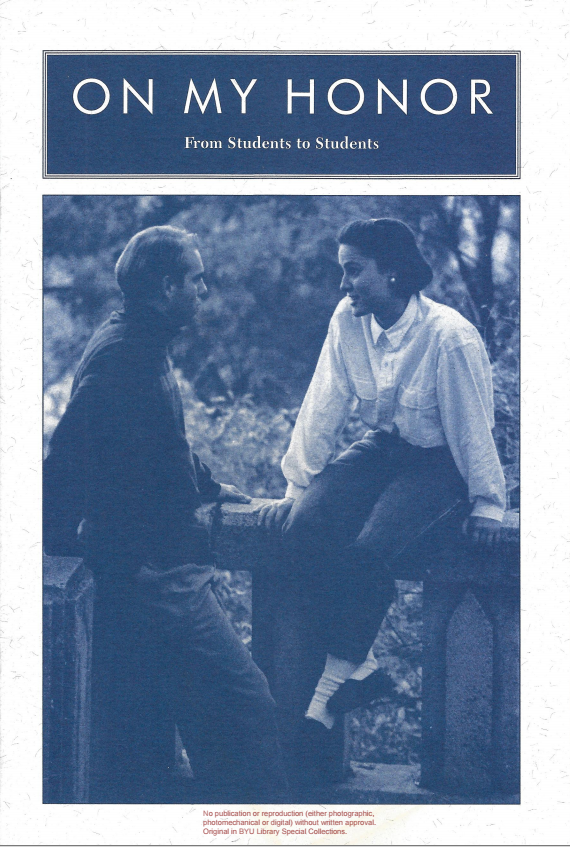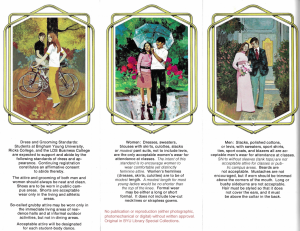BYU’s Honor Code has undergone unprecedented scrutiny in recent months. Though this is certainly not the first time the Honor Code and its policies have been called into question, the past year has been vastly different from anything BYU has faced throughout the history of the Honor Code.

Students won’t be surprised to learn that it was Karl G. Maeser who, after becoming principal of Brigham Young Academy in 1876, founded the “Domestic Organization” which was a group of teachers tasked with ensuring that students were abiding by the school’s moral standards off campus.
“I have made a public promise to your parents that I would look after their sons and daughters, and having made that promise, I’m duty bound to see that it is kept,” Maeser said.
These standards prohibited obscenity, profanity, smoking and alcohol consumption and set rules for curfew and living accommodations. All students were expected to be in by 8:30 p.m. on weekdays and 10:30 p.m. on Saturday and Sunday nights.
According to meeting minutes of the Domestic Organization in 1881, “Maeser said he did not want us to think he had got us here for the purpose of finding out what he could about us or to act as a spy, but that there were some of the students he could not place confidence in because they did not have confidence in themselves, said he wanted to look after and care for them as their parents supposed they were.”
Soon, Brigham Young Academy developed the reputation of a school that turned out highly educated and disciplined students. In 1903, the Academy became Brigham Young University and standards began to change. In the 1930s and 40s as changes were made to student housing and the dress code.
It wasn’t until 1948, however, that the official Honor Code was written by the BYU chapter of the Blue Key National Honor Fraternity and White Key organization and the Honor Code Committee became a student-run organization.
“We take for granted that enrollment in this university assumes acceptance by the individual of the moral ideas and standards of The Church of Jesus Christ of Latter-day Saints,” the first Honor Code read. “We believe that these basic ideals and standards include concern for the welfare of the group, observance of moral laws and compliance with the Word of Wisdom.”
The Honor Code mainly focused on academic honesty and integrity until the 1960s, when BYU president Ernest L. Wilkinson decided to expand the scope of the Honor Code to a good portion of what it includes today.
More formal rules were established that dealt with chastity, drugs and alcohol, as well as dress and grooming standards that would change as the years went by.
By the 1960s, women were allowed to wear slacks or pantsuits, although jeans would be forbidden until 1981, and some rules developed restricting long hair for men, though beards were still allowed.
At the height of the Vietnam War, the Honor Code was rewritten to include requirements that asked students to respect the national and state authorities as well as to not use psychedelic drugs. It was during this period of time that the BYU administration took over the Honor Code and it was no longer student-run.
In 1972, a new list of dress and grooming standards was approved that still required students to dress fairly formally when going to class. The list also officially banned beards and suggested that “mustaches are not encouraged, but if worn, should be trimmed.”

“In an academic world where standards of all kinds have disappeared during the last decade, there remains one institution that demands and gets adherence to the strictest of codes,” the Chronicle of Higher Education wrote about BYU in the 1970s. “Where other campuses long ago succumbed to long hair and tattered jeans, this university maintains high dress and grooming standards.”
It was also during this time that BYU faced lawsuits regarding sex segregation with regards to the housing standards of the university, though these never came to fruition.
Finally, almost 20 years later, a revised version of the Honor Code was approved, and became essentially what the Honor Code is today. The new code emphasizes principles rather than a list of rules, and revisions have been made to the dress and grooming standards.
Just this last year, BYU’s Honor Code has faced scrutiny from students as well as outside media. Last September, students signed a petition asking for a change in the beard policy and even held a bike rally called “Bike for Beards.”
Though the university’s policy on beards did not change, BYU has repeatedly encouraged student feedback.
“In all Honor Code proceedings, the university strives for fairness, sensitivity and compassion, taking into account all mitigating facts and circumstances…” said university spokesperson Carri Jenkins. “The university values and appreciates input from our students. One way students can communicate to the administration is through the Student Advisory Council.”
More recently, BYU has garnered national media attention surrounding issues of sexual assault, and the university has recently become the subject of a Title IX investigation. Many fear that students who are victims of sexual assault won’t report it to the Honor Code office for fear of repercussions if the victims were breaking the Honor Code at the time of the sexual assault.
BYU began a study of the way the university investigates accusations of sexual assault in conjunction with the Honor Code and announced a website where students and others can submit their feedback on the issue.
“The BYU Advisory Council on Campus Response to Sexual Assault has been working throughout the summer on this study,” Jenkins said. “The council has been working with many people inside and outside the university to identify changes that will help BYU move towards the elimination of sexual assault on campus… The website has now received about 3,100 comments, which come from a wide range of sources including alumni, content experts, students, survivors and others.”
As times and opinions have changed, so has the BYU Honor Code, and that change does not seem to have come to an end. Yet the Honor Code continues to adhere to many of the same principles that the very first Honor Code did as it bases itself in the standards of The Church of Jesus Christ of Latter-day Saints.




